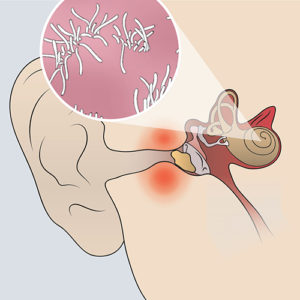
Mixed Hearing Loss
Mixed Hearing Loss
Mixed hearing loss is a combination of conductive and sensorineural hearing loss, meaning that there is damage to both the outer or middle ear and the inner ear (cochlea) or auditory nerve. This type of hearing loss affects both the mechanical and neurological aspects of hearing.

Causes
- Ear Infections : Middle ear infections combined with inner ear damage can contribute to mixed hearing loss.
- Otosclerosis : This condition, which causes abnormal bone growth in the middle ear, may also be accompanied by sensorineural damage.
- Noise Exposure : Prolonged exposure to loud noise can cause damage to both the inner ear and mechanical structures of the outer or middle ear.
- Head Trauma : Severe head injuries can lead to both conductive and sensorineural hearing loss.
- Genetic Factors : Some congenital conditions can result in a combination of conductive and sensorineural hearing loss.
- Age-Related Hearing Loss : In older individuals, age-related damage to the inner ear can combine with other ear conditions.
Symptoms
- Muffled or distorted hearing across different sound frequencies
- Difficulty understanding speech, especially in background noise
- Sensation of fullness or pressure in the ear
- Tinnitus (ringing in the ears) in one or both ears
- Balance problems or dizziness (in some cases)
Diagnosis
- Audiometry : Tests to evaluate both conductive and sensorineural components of hearing loss.
- Tympanometry : Examines the function of the middle ear to detect conductive issues.
- Otoscopy : Visual examination to check for structural problems in the outer and middle ear.
- Imaging : CT or MRI scans can help identify structural damage in the ear.
